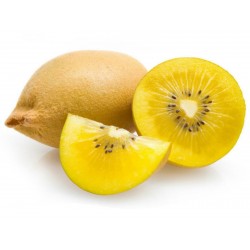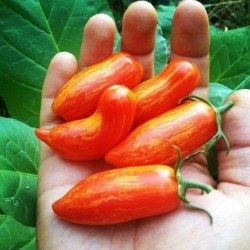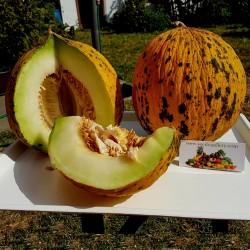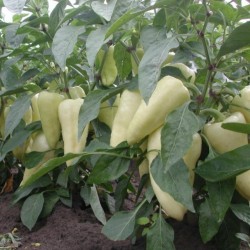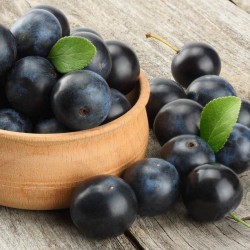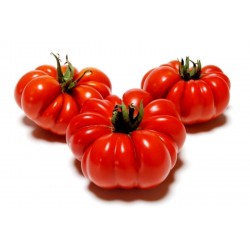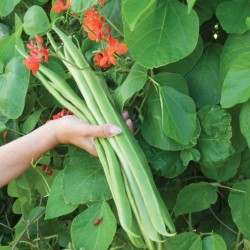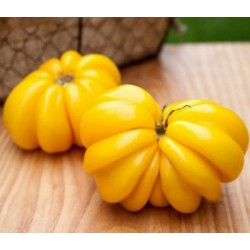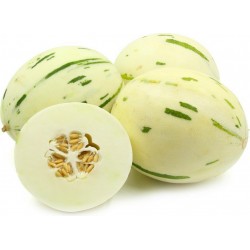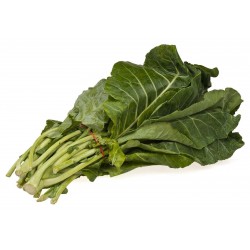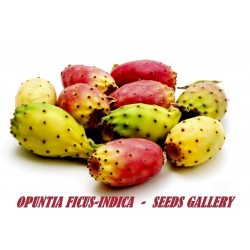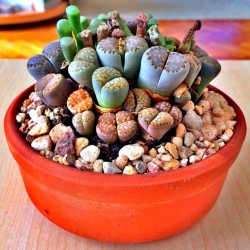Seeds Gallery Com,
5/
5
<h2><strong>Насіння Терен колючий (Prunus spinosa)</strong></h2>
<h2><span style="color: #ff0000;"><strong>Ціна за упаковку з 10 насінин.</strong></span></h2>
<p><b>Те́рен колю́чий</b><sup id="cite_ref-1" class="reference"></sup><span>, або просто </span><b>те́рен</b><span> (</span><i>Prunus spinosa</i><span> </span>L.<span>, </span><i>Prunus moldavica</i><span> </span>Kotov<span>; місцеві назви — слива колюча, тернина, тернослив тощо) — вид рослин із родини </span>розових<span> (Rosaceae).</span></p>
<p>Гіллястий<span> </span>кущ<span> </span>(1—4 м заввишки) або невелике<span> </span>деревце<span> </span>з широкояйцеподібною<span> </span>кроною, темносірою<span> </span>корою<span> </span>і численними<span> </span>колючками. Молоді<span> </span>пагони<span> </span>червонувато-бурі, коротковолосисті або голі.<span> </span>Листки<span> </span>чергові видовжені або видовжено-оберненояйцеподібні (2—5 см завдовжки, 1—1,8 см завширшки), при основі клиноподібні, городчасто-пилчасті, зубчики залозисті. Молоді листки з обох боків опушені, пізніше зверху голі.</p>
<p>Квітки<span> </span>(0,6—1 см у діаметрі) поодинокі, рідше по 2—3 з короткими голими<span> </span>квітконіжками.<span> </span>Квітколоже<span> </span>увігнуте,<span> </span>чашолистків<span> </span>п'ять, трикутно-яйцеподібних, по краю війчастих.<span> </span>Віночок<span> </span>білий або зеленкуватий, з п'ятьма видовженими тупими<span> </span>пелюстками,<span> </span>тичинок<span> </span>20,<span> </span>маточка<span> </span>одна,<span> </span>зав'язь<span> </span>верхня.</p>
<p>Плід —<span> </span>кістянка<span> </span>куляста або округло-конічна, соковита, однонасінна (10—12 мм завдовжки), чорна з восковим нальотом. Кісточка сплюснута, яйцеподібна, зморшкувата, погано відділяється від м'якуша.</p>
<p>Росте на узліссях, по чагарниках,<span> </span>балках, долинах річок.</p>
<div class="thumb tleft">
<div class="thumbinner"><img alt="Насіння Терен колючий (Prunus spinosa)" src="https://upload.wikimedia.org/wikipedia/commons/thumb/0/08/Prunus-spinosa-flowers.JPG/220px-Prunus-spinosa-flowers.JPG" decoding="async" width="220" height="165" class="thumbimage" srcset="//upload.wikimedia.org/wikipedia/commons/thumb/0/08/Prunus-spinosa-flowers.JPG/330px-Prunus-spinosa-flowers.JPG 1.5x, //upload.wikimedia.org/wikipedia/commons/thumb/0/08/Prunus-spinosa-flowers.JPG/440px-Prunus-spinosa-flowers.JPG 2x" data-file-width="600" data-file-height="450" title="Насіння Терен колючий (Prunus spinosa)" />
<div class="thumbcaption">
<div class="magnify"></div>
Цвітіння терну звичайного</div>
</div>
</div>
<div class="thumb tleft">
<div class="thumbinner"><img alt="Насіння Терен колючий (Prunus spinosa)" src="https://upload.wikimedia.org/wikipedia/uk/thumb/f/ff/Teren_012.jpg/220px-Teren_012.jpg" decoding="async" width="220" height="165" class="thumbimage" srcset="//upload.wikimedia.org/wikipedia/uk/thumb/f/ff/Teren_012.jpg/330px-Teren_012.jpg 1.5x, //upload.wikimedia.org/wikipedia/uk/thumb/f/ff/Teren_012.jpg/440px-Teren_012.jpg 2x" data-file-width="3456" data-file-height="2592" title="Насіння Терен колючий (Prunus spinosa)" />
<div class="thumbcaption">
<div class="magnify"></div>
Кущ терну</div>
</div>
</div>
<p>Морозостійка, світлолюбна рослина. Цвіте у квітні — травні, плоди достигають у вересні. Поширений у<span> </span>Закарпатті,<span> </span>Карпатах,<span> </span>Розточчі —<span> </span>Опіллі, в західному<span> </span>Поліссі<span> </span>і в північному<span> </span>Лісостепу, в<span> </span>Степу<span> </span>і<span> </span>Криму<span> </span>замінюється терном степовим.</p>
<p>Райони заготівель —<span> </span>Київська,<span> </span>Вінницька,<span> </span>Черкаська,<span> </span>Полтавська,<span> </span>Харківська,<span> </span>Сумська,<span> </span>Хмельницька,<span> </span>Тернопільська,<span> </span>Львівська,<span> </span>Івано-Франківська області, у<span> </span>Кримській,<span> </span>Херсонській,<span> </span>Запорізькій,<span> </span>Миколаївській;<span> </span>Кіровоградській,<span> </span>Донецькій,<span> </span>Луганській областях<span> </span>можна збирати терен степовий.</p>
<p>Запаси сировини значні.</p>
<h2><span id=".D0.9F.D1.96.D0.B4.D0.B2.D0.B8.D0.B4.D0.B8"></span><span class="mw-headline" id="Підвиди">Підвиди</span></h2>
<ul>
<li><b>Терен колючий, підвид степовий</b><span> </span>(<i>Prunus spinosa</i><span> </span>subsp.<span> </span><i>stepposa</i><span> </span>Kotov.)</li>
</ul>
<p>Відрізняється від попереднього дефінітивного виду більшим опушенням і крупнішими плодами (1,5 — 2 см у діаметрі.) Поширений у Степу України.</p>
<ul>
<li><b>Терен колючий, підвид молдавський</b><span> </span>(<i>Prunus spinosa</i><span> </span>subsp.<span> </span><i>moldavica</i><span> </span>Kotov) — на<span> </span>Придністров'ї, західній частині Степу і в Криму.</li>
</ul>
<h2><span id=".D0.9F.D1.80.D0.B0.D0.BA.D1.82.D0.B8.D1.87.D0.BD.D0.B5_.D0.B2.D0.B8.D0.BA.D0.BE.D1.80.D0.B8.D1.81.D1.82.D0.B0.D0.BD.D0.BD.D1.8F"></span><span class="mw-headline" id="Практичне_використання">Практичне використання</span></h2>
<p>Харчова, медоносна, лікарська, танідоносна, фарбувальна, декоративна, фітомеліоративна рослина.</p>
<h3><span id=".D0.A3_.D1.85.D0.B0.D1.80.D1.87.D1.83.D0.B2.D0.B0.D0.BD.D0.BD.D1.96"></span><span class="mw-headline" id="У_харчуванні">У харчуванні</span></h3>
<p>Плоди терну вживають у їжу свіжими, особливо після проморожування, а також використовують як цінний продукт для різних способів переробки, для виробництва вин, варення, соків, сиропів,<span> </span>екстракту, лікерів, оцту, мармеладу,<span> </span>пастили,<span> </span>цукатів.</p>
<p>Вина, наливки й кондитерські вироби з терну відзначаються високими смаковими і дієтичними властивостями, тонким приємним ароматом.</p>
<p>Терен використовують як у харчовій промисловості, так і для домашнього консервування.</p>
<div class="thumb tleft">
<div class="thumbinner"><img alt="Насіння Терен колючий (Prunus spinosa)" src="https://upload.wikimedia.org/wikipedia/commons/thumb/b/bd/Prunus_spinosa2.jpg/220px-Prunus_spinosa2.jpg" decoding="async" width="220" height="165" class="thumbimage" srcset="//upload.wikimedia.org/wikipedia/commons/thumb/b/bd/Prunus_spinosa2.jpg/330px-Prunus_spinosa2.jpg 1.5x, //upload.wikimedia.org/wikipedia/commons/thumb/b/bd/Prunus_spinosa2.jpg/440px-Prunus_spinosa2.jpg 2x" data-file-width="640" data-file-height="480" title="Насіння Терен колючий (Prunus spinosa)" />
<div class="thumbcaption">
<div class="magnify"></div>
Плоди терну колючого</div>
</div>
</div>
<p>До складу плодів входять<span> </span>цукри<span> </span>(5,6 %),<span> </span>яблучна кислота<span> </span>(3,3 %),<span> </span>дубильні<span> </span>й<span> </span>ароматичні речовини,<span> </span>вітамін С<span> </span>(15—19 мг%).</p>
<p>Насіння терну містить жирну олію (до 37 %),<span> </span>глюкозид<span> </span>амігдалін<span> </span>і може слугувати сировиною для одержання жирної і мигдалевої<span> </span>ефірної олії. З кісточок виробляють<span> </span>активоване вугілля.</p>
<p>Своїх смакових властивостей терен не втрачає навіть після висушування. Сухі плоди йдуть на приготування компотів, киселів і як замінник чаю.</p>
<p>Терен — весняний<span> </span>медодай<span> </span>і пилкодай, що дає підтримуючий взяток. Медопродуктивність його доходить до 30 кг/га.<sup id="cite_ref-2" class="reference">[2]</sup></p>
<h3><span id=".D0.A3_.D0.BC.D0.B5.D0.B4.D0.B8.D1.86.D0.B8.D0.BD.D1.96"></span><span class="mw-headline" id="У_медицині">У медицині</span></h3>
<p>У народній медицині терен здавна використовують як дієтичний і лікувальний засіб при<span> </span>захворюваннях шлунку<span> </span>та кишківника. Плоди, квітки і кору терну застосовують як кровоочисний засіб, особливо при нашкірних<span> </span>висипах, масових<span> </span>фурункулах. Квітки терну корисні і при різних хворобах<span> </span>печінки. Квітки регулюють<span> </span>перистальтику<span> </span>кишок<span> </span>і вважаються ніжним проносним засобом. Корені, кора і молода деревина мають протигарячкові і потогінні властивості. Листки терну рекомендують як сечогінний і проносний засіб. Верхній шар кори терну рекомендують прикладати при<span> </span>бешихових запаленнях<span> </span>шкіри. Відвари з коренів і листків використовують для полоскання ротової порожнини при захворюванні зубів і ясен.</p>
<h3><span id=".D0.A3_.D0.BF.D1.80.D0.BE.D0.BC.D0.B8.D1.81.D0.BB.D0.BE.D0.B2.D0.BE.D1.81.D1.82.D1.96"></span><span class="mw-headline" id="У_промисловості">У промисловості</span></h3>
<p>Кора і деревина терну містять<span> </span>таніди<span> </span>(до 8 %) і використовуються для<span> </span>гарбування<span> </span>шкір. При змішуванні кори з<span> </span>мідним купоросом<span> </span>одержують чорна фарбу і якісне чорне чорнило, а при змішуванні з<span> </span>лугами — жовту фарбу. Сік плодів використовують для фарбування полотна.</p>
<h3><span id=".D0.A3_.D0.BE.D0.B7.D0.B5.D0.BB.D0.B5.D0.BD.D0.B5.D0.BD.D0.BD.D1.96"></span><span class="mw-headline" id="У_озелененні">У озелененні</span></h3>
<p>В<span> </span>озелененні<span> </span>терен використовують для створення<span> </span>живоплотів. Терен колючий і степовий — цінні рослини для створення<span> </span>захисних насаджень, для закріплення схилів, ярів і балок.</p>
<h2><span id=".D0.97.D0.B1.D0.B8.D1.80.D0.B0.D0.BD.D0.BD.D1.8F.2C_.D0.BF.D0.B5.D1.80.D0.B5.D1.80.D0.BE.D0.B1.D0.BA.D0.B0_.D1.82.D0.B0_.D0.B7.D0.B1.D0.B5.D1.80.D1.96.D0.B3.D0.B0.D0.BD.D0.BD.D1.8F"></span><span class="mw-headline" id="Збирання,_переробка_та_зберігання">Збирання, переробка та зберігання</span></h2>
<p>Збирають плоди, квітки, листки і корені. Плоди збирають восени, сортують, видаляючи пошкоджені і домішки. Перебрані чисті плоди зсипають у дерев'яні діжки, прикривають чистою вологою тканиною і зберігають у погребах або ж відправляють на пункти переробки. Сушать плоди на сонці або під наметами, у печах чи<span> </span>сушарках<span> </span>при температурі 45—50°. Висушені плоди пакують у паперові мішки вагою по 25 або 50 кг і зберігають у сухих прохолодних приміщеннях.</p>
<p>Листки збирають у середині літа, квітки — в період повного цвітіння і сушать звичайним способом.</p>
<script src="//cdn.public.n1ed.com/G3OMDFLT/widgets.js"></script>
V 156 (2.5g)

